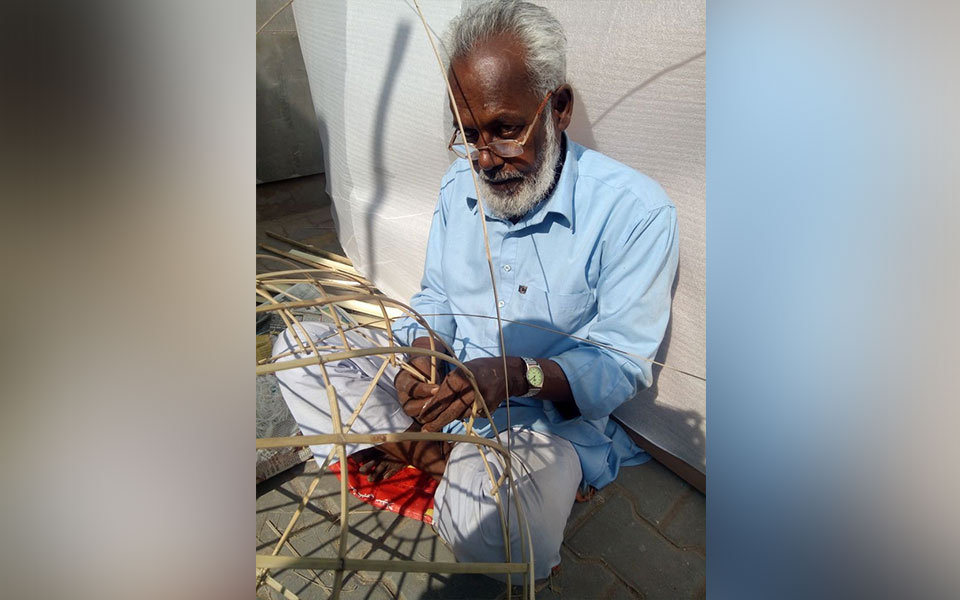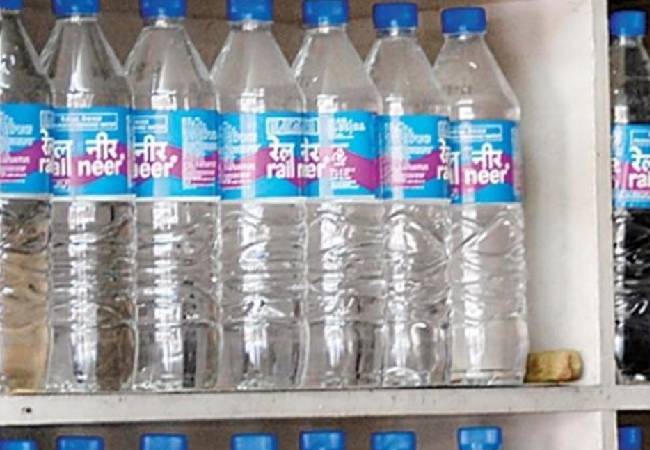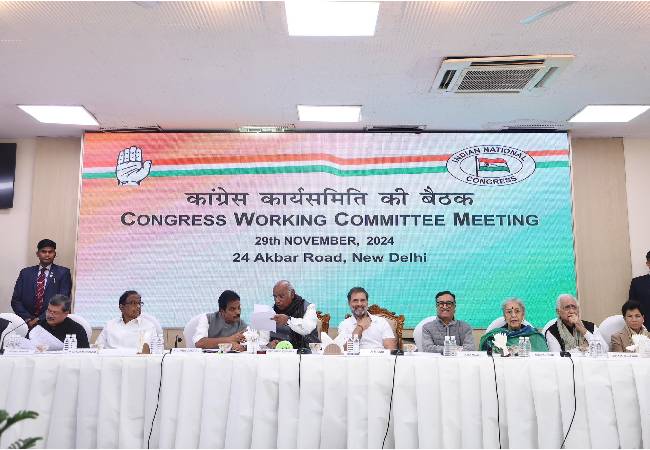Jaipur, July 8: For centuries, their creations have been used in sombre processions to commemorate and reconstruct the narrative of the 7th century Battle of Karbala in Islamic history. But now, these artists, mostly Shia Muslims, make Hindu wedding mandaps, replicating the design of the shrine of Prophet's grandson Imam Hussain Ali, who was killed in that war.
Hundreds of couples in the country have exchanged wedding vows under these mandaps, representing the replicas of the complex, housing one of the oldest mosques in the world and a holy site of Shia Muslims in the Iraqi city of Karbala. These replicas, also called tazia, which otherwise Shia mourners use during their annual Muharram processions, are also used for decorating venues of birthday parties.
The art of tazia making arrived in India from Central Asia and is said to have flourished during Mughal rule. One of these artisans, Muhammad Bilal Azimuddin, speaking to IANS, said they were in Mumbai recently to design a Hindu marriage mandap at the Hotel Grand Hyatt there.
"Our clients wanted us to design something exquisite, which we did," he said, adding that caste and creed never comes into picture.
"Our designs have been used in Hindu weddings as well as in birthday parties of children. What clients love is the exquisite adorned minarets which have won millions of hearts and are making waves across the nation," he said.
Many art connoisseurs have also decorated their residences, offices, theme parties and corporate events with tazia-inspired minarets and lamps, he added.
Basically, these artisans make tazias during Muharram processions. As this symbolises sorrow to their community, they never charge any price for it. "It is a service to God," says Muhammad Bilal Azimuddin, who learnt this craft from his father who was known as Azimuddin Bhai (brother) in community circles.
Meanwhile, their socio-economic standards have witnessed a sudden rise as they started taking up commercial projects.
The fortunes of this tazia community changed when a leading designer of the country, Geetanjali Kaswaliwal, owner of globally reputed Anantaya which is committed to development of ideas using local crafts evolved over centuries, watched a tazia procession for the first time in Jaipur. Anantaya is known for showcasing Unesco award-winning luxury cutting-edge objects, furniture, textiles and accessories inspired by the culturally-rich artisanal world.
She was moved by the attractive presence of tazias on the streets. Soon after, when her husband's firm, AKFD Studio, got the order for making markers for the entire city during the Jaipur Virasat Heritage Festival 2007, she thought of using tazia-inspired designs for the city.
"We wanted to make something sculptural for this event to ensure guests bask in the glory of cultural craft. We created a huge structure of tazia. The task was commissioned to tazia artisans who were adept with the artistry associated with it. The project was headed by Azhimuddin bhai. With nine kids, he was keen to work with us and hence we had their designs and skills which helped them earn name, fame and revenue also," she told IANS.
It was more like a pure engagement with these artisans who created impressive spheres. Even the tazia artisans enjoyed doing something innovative, said Kaswaliwal.
Later, she brought tazia-inspired designs to her house while celebrating birthday parties of her daughters. Instead of plastic balloons, tazia artisans decorated the venue with handmade craft. The big balloons and lamps were quite authentic which caught the attention of all those present.
Kaswaliwal ensured this art was taken to the next level and asked the artisans to decorate the wedding mandap of her sister's marriage solemnised in New Delhi in 2009.
"They did it with their heart and soul and the response was amazing. Everybody was talking of these designs and this is how their art gained wings and reached heights from where there was no looking back," she added.
"No one in our family had any resistance anywhere when my sister's wedding mandap was being designed by Muslim artisans. They loved their integrity and engagement with which they did the decor," she recalled.
There is another positive side to the story. The designs crafted by tazia artisans is via paper and bamboo which gives a strong message of sustainability and ecological balance.
When asked about remuneration, Bilal said it's the size of the mandap and party venue which defines their remuneration and the number of people also depends on the quantum of work.
"Seeing our work, we have received orders to design the Rajasthan Heritage Week Festival. Also, we did the design in 2009 when Art Institute of Chicago delegates were in India. We used bamboo-made sets which were praised a lot," said Bilal.
"What we love is the fact that people of all castes and communities admire our work -- and tell others about it. What else does a grassroots artisan want?" Bilal asked with a smile.

Let the Truth be known. If you read VB and like VB, please be a VB Supporter and Help us deliver the Truth to one and all.
New Delhi (PTI): Approximately 13 lakh litres of packaged drinking water -- 'Rail Neer' -- are being supplied to train passengers across the railway network daily, the government informed the Lok Sabha in a written reply on Wednesday.
Apprising the Lower House about the Indian Railways' endeavour to provide safe and potable drinking water facilities at all stations, the government also provided zone-wise details of the water vending machines (WVMs) installed there.
"To ensure the quality of drinking water being made available at the railway stations, instructions exist for periodical checking and required corrective action to be taken.
"Regular inspection and maintenance of drinking water facilities is carried out and complaints are attended to promptly," Railway Minister Ashwini Vaishnaw said while responding to a question raised by BJP MP Anup Sanjay Dhotre seeking to know the supply of drinking water at railway stations across the country
"Complaints regarding deficiency in services, including water supply, are received through various channels such as public complaints, web portals, social media, etc. These complaints are received at various levels, including the Railway Board, zonal railways, division office, etc.," Vaishnaw said.
"The complaints so received are forwarded to the concerned wings of Railways and necessary action is taken to check and address them. As receipt of such complaints and action taken thereon is a continuous and dynamic process, a centralised compendium of these is not maintained," he added.
Providing zone-wise details of water vending machines, the minister said 954 such machines have been installed across railway stations.
"The Indian Railways also provides safe and affordable packaged drinking water bottles -- Rail Neer -- approved by the Bureau of Indian Standards (BIS) in trains and at stations," Vaishnaw said.
"Approximately, 13 lakh litres of Rail Neer are being supplied per day to the travelling passengers in trains and at stations across the Indian Railways network," he added.




